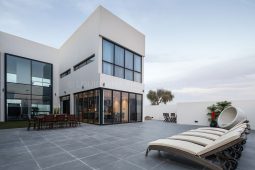Unlock the Power of Lightroom’s Tone Curve Panel (VIDEO)
Is Lightroom’s Tone Curve panel part of your everyday workflow? If not, you’re missing out on a very versatile tool that’s useful for enhancing just about any photo you capture. The video below will get you up to speed with a quick primer from “digital-imaging evangelist” Julienne Kost.
Kost is a popular educator and an expert at all things Adobe, and she introduces today’s topic like this: “While Lightroom’s Basic panel offers a lot of control over the tonal values in your images, with the Tone Curve we have even more precision and control.”

You’ll learn all about the Parametric Curve and the Point Curve with practical examples for using both. Kost suggests that you first set the black and white points in the Basic panel before using the Parametric Curve. You can tap the J key to toggle the visibility of shadow and highlight clipping warnings, then move the white slider to the right while watching the histogram to make sure highlights aren’t devoid of detail.
Similarly, move the back slider to the left until you see an overlay indicating pure black, and then back off slightly. The next step is returning to the Tone Curve panel where the Parametric Curve is divided into four regions, with sliders for refining highlights, lights, darks, and shadows. You can also click within the Curve, drag it up or down, and Lightroom will automatically select the corresponding slider for that specific area.

The foregoing is just a taste of what you’ll discover as the lesson progresses, and we’re pretty sure you’ll add the Curve panel to your Lightroom workflow once the video concludes. Then head over to Kost’s popular YouTube channel where you’ll find solutions to just about any image-editing challenge you confront.
We also recommend watching the tutorial we posted recently, featuring another post-processing expert who explains how to add dramatic depth and dimension to outdoor photographs with a simple Lightroom masking technique.




